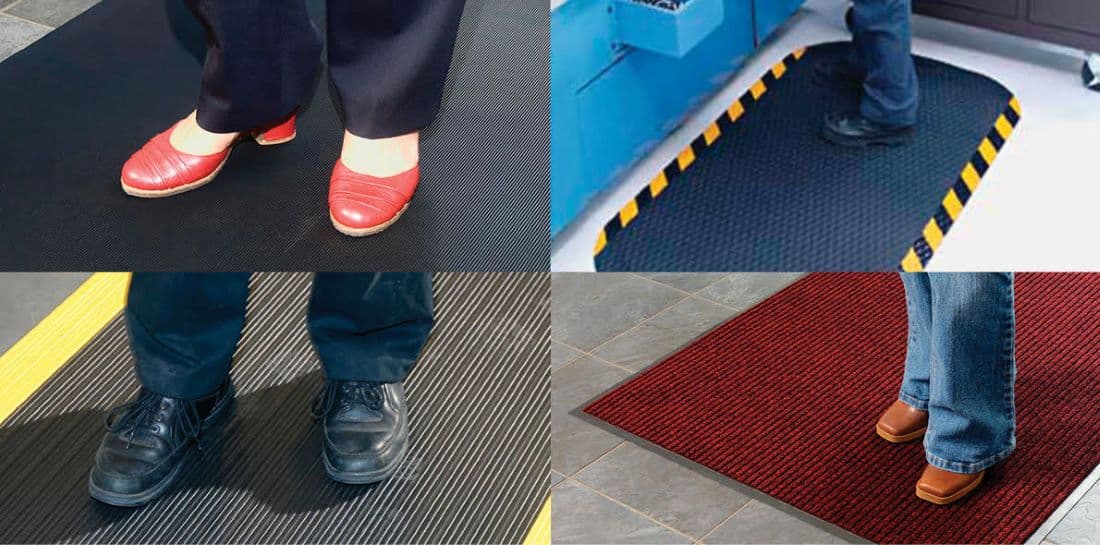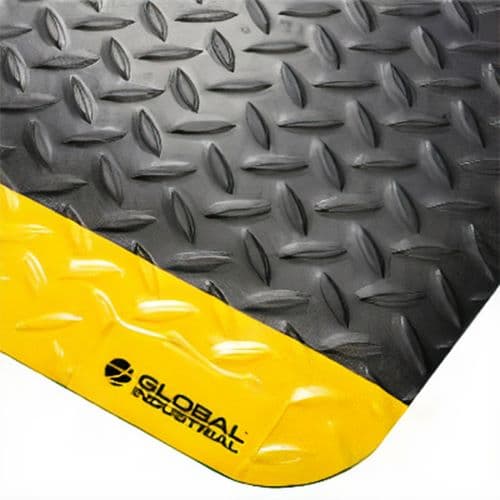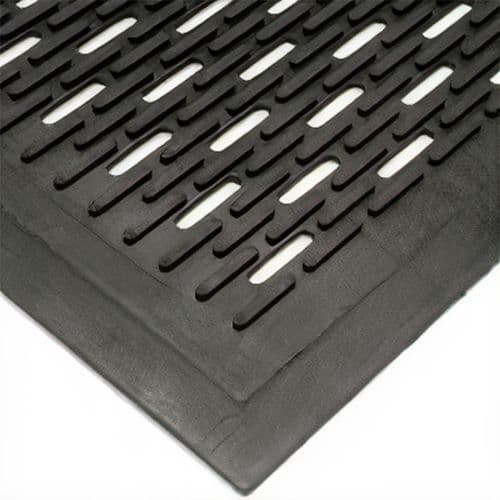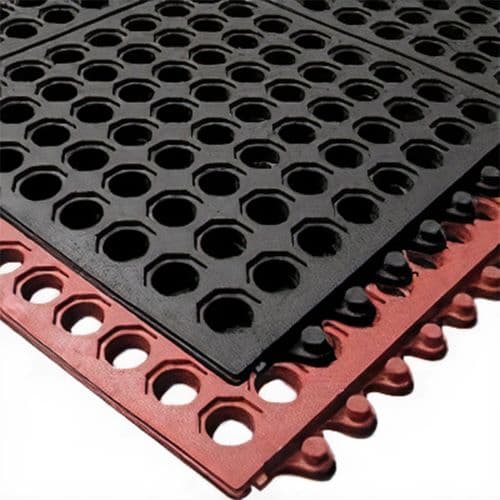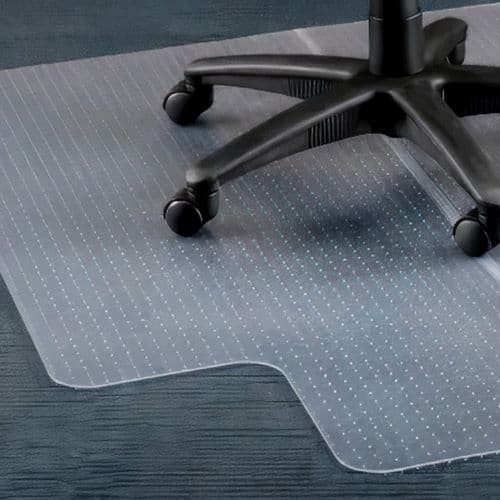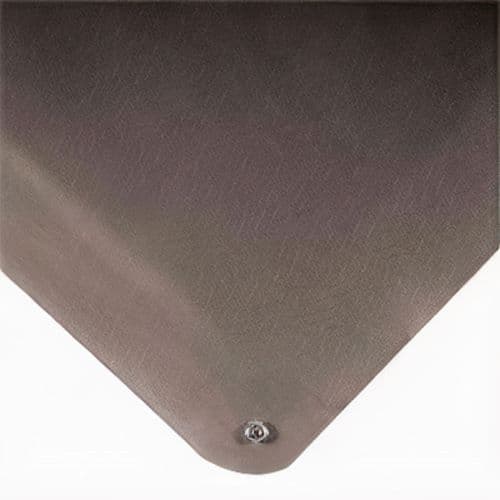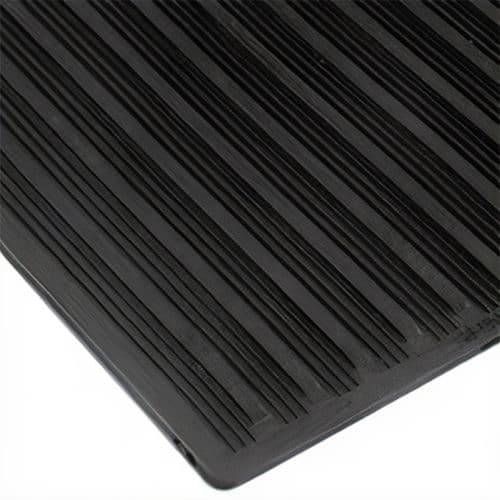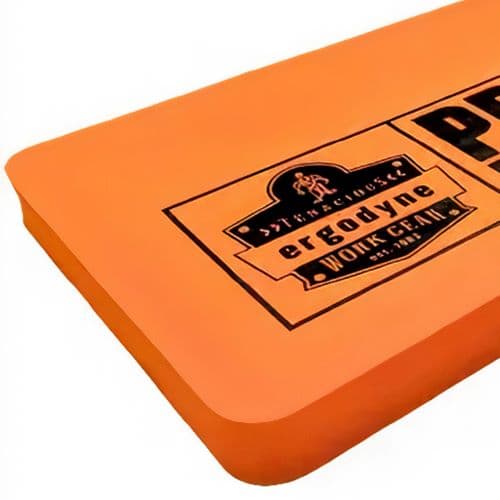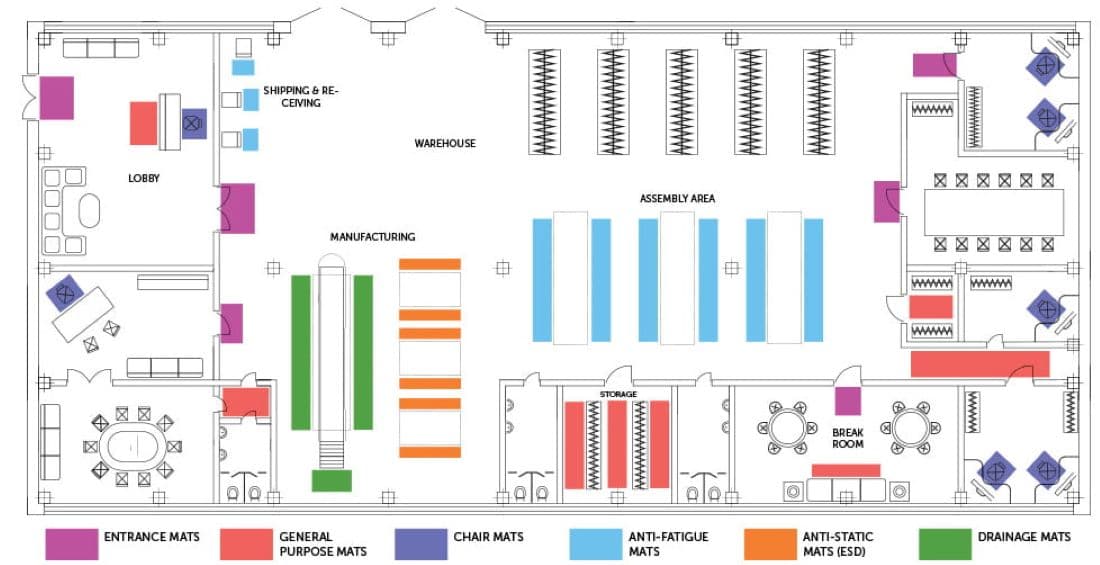Have you ever filed a workman's comp claim due to slips & falls? When was the last time someone reviewed matting throughout your facility to make proper adjustments?
All these checks and balances are key to maximizing operational efficiency. While OSHA currently has no general industry standard requiring the use of matting, OSHA does refer to the value of these mats in their guidelines and notes they "should be provided where practical" (OSHA 1910.22 (a)(2). Safety mats are here to help.
While mats are often overlooked and walked all over, floor mats are the unsung heroes in facilities everywhere and range from kitchen mats to gym mats, to carpet squares, and everything in-between. Typically used to protect the floor, mats are far more beneficial than many realize, especially in enhancing operational efficiencies. One of the many keys to improving efficiencies includes creating safe and healthy work environments for employees—one way to accomplish that is by using floor mats.
BRINGING OPERATIONAL EFFICIENCY TO THE FLOOR
Mats are imperative industrial flooring options for implementing operational efficiency. Organizations that ensure their facilities are safe can help prevent accidents and injuries, unnecessary absences, and boost morale. Here are a few things to keep in mind when you’re looking to provide an efficient workplace for your employees:
Safety Mats:
Safety mats can provide surfaces that aid in the prevention of slips, trips, and falls. This can improve efficiency by preventing injuries, reducing workers' comp claims, lost workdays, and insurance claims.
Comfort:
Mats create a barrier between a hard, uncomfortable facility floor and an employee's feet. Standing for extended periods on the wrong surface can have damaging effects. Having comfortable tools, such as floor mats, will ensure that employees can operate at 100% with less pain and be productive for long periods.
Cleanliness:
The right type of mat can help reduce the amount of dirt, dust, and debris tracked throughout a facility. This can improve efficiency by reducing the time and resources needed to clean and maintain a workspace.
Improved Appearance:
A clean and organized facility gives the employees a sense of pride and accountability. Are you meeting clients in your facility, or do you operate out of an adjacent office? Vinyl plank flooring known as LVP flooring will dramatically improve appearances quickly while creating a comfortable place to do business for yourself and your clients. Does your business operate a fleet of vehicles? Car mats keep your business looking sharp even when you’re on the road.
Easy maintenance:
Your janitorial staff will thank you when their maintenance time is cut down because you have an easily maintained facility. Less time maintaining means more time for productivity and improvements that can further an employee's pride in an organization.
More for the Floor
Understandably when you think of floor mats, you think about mats for wiping your feet when entering a facility. Still, the differences amongst varieties of floor mats are much more nuanced. Even within types of floor mats, additional considerations should be made so your employees remain safe and comfortable throughout their careers. Floor mats that are usually found throughout a facility are:
Key Questions to Ask Yourself:
- Are you improving the safety of your workers and facility while keeping up with industry standards?
- What do your employees need? Engage your workers to find out where they could use an assist to lessen the workday load.
- Where are your highly trafficked areas? These are the first places to add or update your mats. Plus, consider backup mats you can store. Highly trafficked areas have often been found guilty of causing wear and tear.
Your Partner in Safety, Floor Care, and More
Floor mats can help to improve operational efficiency by creating a safer, more comfortable, and more organized workplace, which can increase productivity and reduce costs. However, the most effective flooring solution will depend on your business or organization's specific needs and requirements. As a dedicated part and solutions expert, Global Industrial can review your facilities for gaps in safety procedures, including floor safety. Learn more about how we can help your business achieve operational efficiency by connecting with one of our Global Industrial sales representatives at 888.978.7759 or contacting us here.
The information contained in this article is for informational, educational, and promotional purposes only and is based on information available as of the initial date of publication. It is the reader’s responsibility to ensure compliance with all applicable laws, rules, codes and regulations. If there is any question or doubt in regard to any element contained in this article, please consult a licensed professional. Under no circumstances will Global Industrial® be liable for any loss or damage caused by your reliance on this article.
